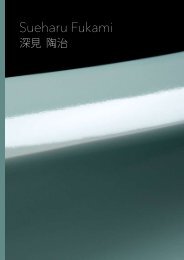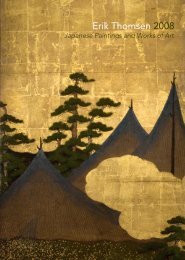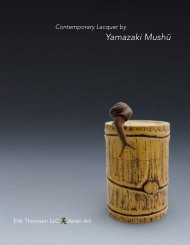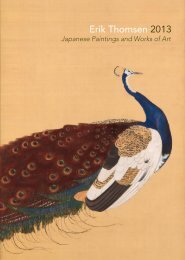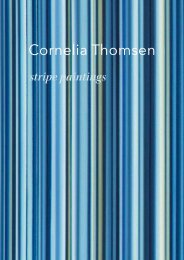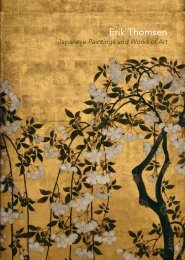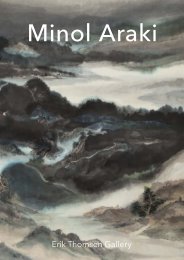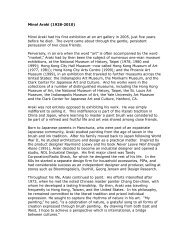View publication (pdf file 6.5 mb) - Erik Thomsen
View publication (pdf file 6.5 mb) - Erik Thomsen
View publication (pdf file 6.5 mb) - Erik Thomsen
- No tags were found...
Create successful ePaper yourself
Turn your PDF publications into a flip-book with our unique Google optimized e-Paper software.
18Sano Kōsui 佐 野 光 穂 (1896 –1960)A Cat in a Melon PatchTaishō Period (1912 – 26), circa 1925H 57" × W 20" (incl. mounting 85" × 26")(145cm × 50.7 cm, 216 cm × 65.8 cm)Hanging scroll, ink, colors and gold on silkSignature: Keimei 契 明Seal: Keimei 契 明The technique he uses throughout is tarashikomi,a procedure in which ink, mineral colors and goldare dipped into a still-wet surface of ink. 1 As thetechnique is difficult to control, it is usually done onsized paper; tarashikomi on silk, as in this case, israre. The resulting painting is an elegant display ofthe superlative skills of the artist.A black cat sits among melons and looks out at theworld. The artist presents us here with a strikingcomposition of a cat sitting in unexpected surroundings.The painting is a well thought-out compositionof shapes and colors in which the black furrycat with golden eyes stands out among the lightcoloredspiraling tendrils, decaying flowers, andbulbous melons.Sano Kōsui came from the Nagano prefecture andarrived in Kyoto in 1914 during the Taishō Period,when many great painters were active at the sametime. 2 He was fortunate to become a student undertwo of the leading artists of the time. He first learnedShijō school techniques under Kikuchi Keigetsu菊 池 契 月 (1879 –1955), then Nihonga techniquesunder Tomita Keisen 富 田 渓 仙 (1879 –1936). 3The technical skills of the artist are astonishing:he manages to co<strong>mb</strong>ine the ink, colors and gold—both wet and dry—to create the furry coat of thecat (by making ink seep out into the silk) as wellas the surface patterns of the melon and leaves.The artist was also known for his independence andstrong will. He was ousted from Keigetsu’s studioafter he married against the wishes of his master.Keisen, however, respected his talented student andthe relations between the artist and his new masterremained harmonious.Kōsui moved to Kobe, but returned to Kyoto in 1928,where he stayed for the rest of his professional life.He specialized in paintings of animals and took partin numerous exhibitions. His works were also includedin prestigious national venues, such as theTeiten and the Inten exhibtions. 472



